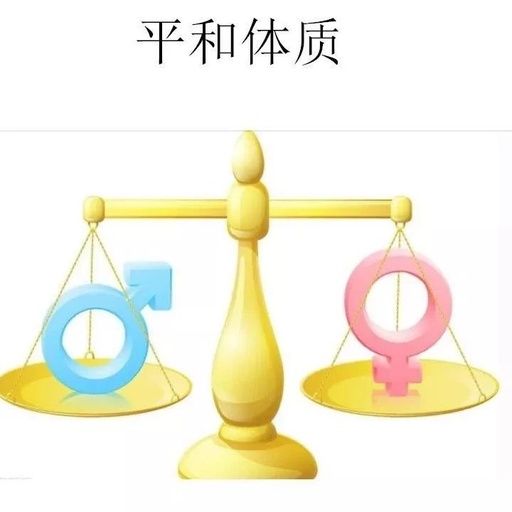Warm reminder: Click the audio below to listen to the complete course content!
The concept of constitution and health preservation has existed since the “Huangdi Neijing” (Yellow Emperor’s Inner Canon), which is the earliest medical text in China. In the Huangdi Neijing, based on differences in body shape, skin color, cognitive abilities, emotional responses, willpower, personality, and adaptability to seasonal climates, human constitution is classified into five types: Wood, Fire, Earth, Metal, and Water. This is the earliest classification of human constitution in traditional medicine.
Later generations, based on TCM theories and modern medical research, summarized ancient experiences and refined the classification of Chinese people into nine constitutions. In 2009, the national standard (Classification and Judgment of TCM Constitution) categorized people into nine types: one harmonious and eight imbalanced.
Different individuals have different physical conditions. Different physical conditions require different health preservation methods. TCM emphasizes health preservation based on individual differences, so learning to discern one’s constitution allows for more effective health management.
So, what is constitution? Let’s look at this image; I will explain what human constitution is through the growth of plants.
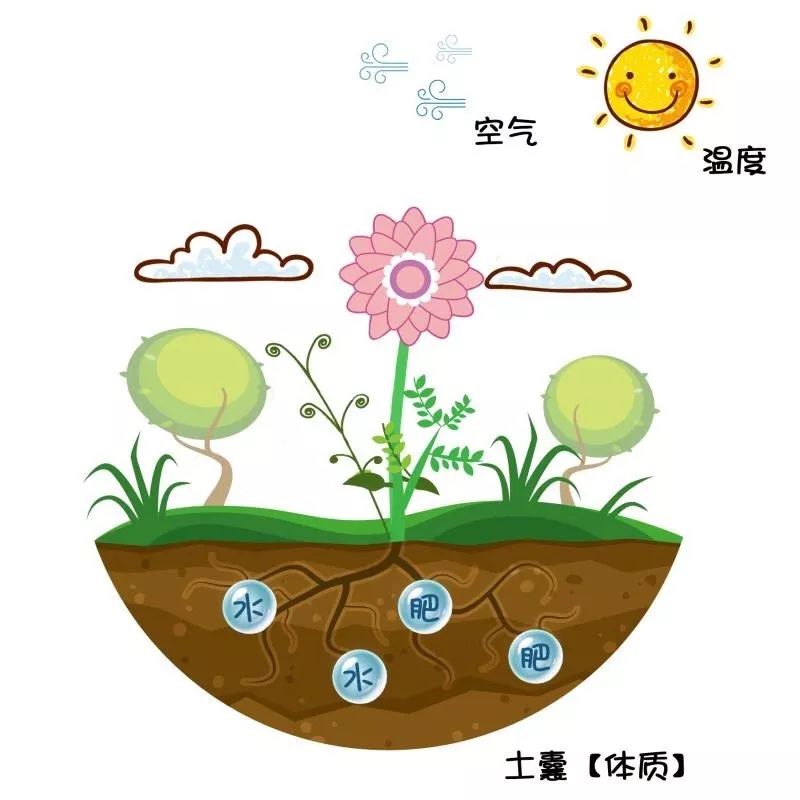
Plants require five major conditions for growth: air, temperature, water, fertilizer, and soil.
Plants need sunlight for growth; this sunlight’s temperature is equivalent to the human body’s temperature. Without temperature, a person is lifeless.
If a flower is covered with a bag, it will die because it lacks air. Thus, air is essential for plant growth, similar to how breathing is essential for humans; without air, a person will also die.
Plants also need fertilizer, which is equivalent to blood in the human body. Without blood, a person will die.
Plants require water, which corresponds to the essence in the human body. In TCM, we refer to useful water as essence, while used or ineffective water is termed phlegm-dampness. For simplicity, we refer to both useful and ineffective water as water. Without water, a person will also die.
When watering plants, if too much water is given, it can lead to excessive growth, causing stems and leaves to elongate wildly, resulting in many leaves but no flowers. This is akin to humans gaining weight when there is too much water in the body. Conversely, if plants receive too little water, their leaves will turn yellow, become dry and shriveled, similar to how humans may become emaciated when water is scarce.
The most crucial requirement for plant growth is soil. Without soil, there can be no plants. The soil is analogous to our constitution.
The flower’s appearance on the plant reflects a person’s complexion. A person with a rosy complexion is healthy. For plants to thrive in soil, they need air, water, temperature, and fertilizer.
If any of these elements—air, water, fertilizer, or temperature—are lacking, the plant will not grow well and will not produce beautiful flowers.
If a plant’s leaves turn yellow and wilt, it may be due to insufficient watering, lack of sunlight, or lack of fertilizer.
The quality of soil affects plant growth, just as the quality of our constitution affects our health. If a piece of dry land lacks water, it becomes parched; if it has too much water, it turns into mud.
We can classify constitutions based on the conditions required for plant growth and those needed for the human body: air, water, temperature, and blood.
Good soil leads to healthy plant growth, requiring moderate temperature, air, water, and fertilizer. This is the harmonious constitution, where all bodily conditions are balanced and healthy.


Regarding water, there are two types of constitutions: phlegm-damp constitution and yin deficiency constitution.
Overwatering plants can lead to excessive growth, causing stems and leaves to elongate wildly and inhibiting flower bud differentiation, resulting in no fruit. In humans, excess water leads to a phlegm-damp constitution, characterized by obesity.
Insufficient water can disrupt the water balance within plants, causing them to wilt. If the water content falls below the minimum tolerance level, the roots cannot absorb enough water, leading to stunted growth and eventual wilting and death. Individuals with insufficient water are considered to have a yin deficiency constitution, where water and blood belong to the yin category; a deficiency in yin means a deficiency in water.
In a fire emergency, we call 119, but if the fire truck arrives without enough water, it cannot extinguish the fire. This is what we often refer to as yin deficiency with excess fire; insufficient water can easily lead to excessive heat. Therefore, individuals with a yin deficiency constitution tend to have higher body temperatures.


Regarding temperature, there are two types of constitutions: yang deficiency constitution and yin deficiency constitution.
Low temperatures can reduce enzyme activity in plant cells, and prolonged exposure to low temperatures can lead to plant death. Some plants have poor cold resistance; when temperatures drop, their leaves may turn yellow, wilt, or even freeze to death!
To ensure healthy plant growth, they need plenty of sunlight, which helps them withstand cold and enhances photosynthesis.
Some individuals are particularly sensitive to cold; while others wear one layer, they wear two, and they may carry a scarf or shawl to keep warm. They are afraid of air conditioning and have cold hands. This indicates a yang deficiency constitution, as in TCM, the term “yang” is associated with temperature.
Why do we often discuss “yang” in conjunction with qi? Yang represents temperature; without the circulation of qi, temperature cannot be transmitted. Therefore, yang and qi are often discussed together as “yang qi.”


Regarding temperature and water, there is the damp-heat constitution.
If a plant is exposed to excessive sunlight and overwatered, its roots may begin to rot.
When the internal environment of the human body is both damp and hot, it is conducive to bacterial growth, leading to inflammation, and the skin is particularly prone to acne. This is the damp-heat constitution.


Regarding fertilizer, there is the blood stasis constitution.
Plants require fertilizer, which is equivalent to blood in the human body. If fertilizer is not evenly distributed, it can accumulate in one area, similar to blood stasis in the body. Individuals with blood stasis often have skin blemishes, as stagnant blood leads to poor circulation and accumulation of toxins.


Regarding qi, there are the qi deficiency constitution and qi stagnation constitution.
Like humans, plants also breathe continuously. When breathing stops, the plant’s life ceases. Plants do not have specialized respiratory organs; their respiration occurs in every living cell. Due to the subtlety of plant respiration, it is often overlooked, yet it is a crucial part of their metabolism, involving the continuous absorption of oxygen from the air and oxidation of organic matter.
Some individuals lack energy; they become breathless after climbing just two steps and feel exhausted after minor tasks. These individuals are considered to have a qi deficiency constitution, characterized by shortness of breath and reluctance to speak.
When qi circulation is obstructed, we define it as qi stagnation. Stagnation refers to qi being blocked and not circulating. The liver governs the function of smooth flow; if this function is impaired, it leads to liver qi stagnation, causing feelings of oppression, chest tightness, and a tendency to be overly meticulous—this is the qi stagnation constitution.


The last type is the special constitution,which is characterized by a tendency to allergies.
To improve soil quality, we need to adjust temperature, air, water, and fertilizer to appropriate levels.
In our bodies, qi and temperature belong to yang, while water and blood belong to yin. Together, they represent the balance of yin and yang. Therefore, adjusting constitution is quite simple: if there is excess water, we expel it; if there is insufficient water, we add some. If qi is insufficient, we supplement it; if qi is blocked, we unblock it. If blood is stagnant, we promote circulation; if temperature is low, we increase it.
Thus, if plants are not growing well, it is a soil issue. The soil represents our constitution; if the constitution is problematic, the symptoms of discomfort cannot be fundamentally resolved.
Constitution refers to a person’s physical quality and overall health.
If plants are not growing well, how can we change the soil? To transform dry soil into fertile soil, we need to water and fertilize it. If we want to change muddy soil into fertile soil, we can:
1. In cases of excess water, we can dry it out under the sun and raise the temperature.
2. In cases of excess water, we need to drain it to maintain a balanced moisture level, which is called correction.
Everyone has two constitutions: one is congenital, and the other is dynamic, which can change over time. From the moment the sperm and egg combine, your congenital constitution is determined.
Your constitution can change due to various factors in life, such as moving from the north to the south, where the climate is humid, frequently consuming spicy foods, experiencing poor emotions, and high work pressure. If your body cannot adapt, you may develop many skin rashes and acne, leading to a damp-heat constitution. Therefore, adjusting constitution is about correcting and improving it.
Different constitutions respond differently to external stimuli. For example, when camping outdoors, some people may fall ill or catch a cold due to environmental changes, while others remain unaffected.
Why do some people take a long time to recover from a cold, even after taking medication, while others recover quickly just by drinking water? This is due to the differences in constitution affecting the progression and transformation of illness.
Our ability to adapt to social and natural environments often relates to our constitution. For instance, attitudes towards the same event can vary; some people are cheerful and optimistic, while others are melancholic and troubled. The same situation can elicit different reactions and outcomes in different individuals.
Understanding constitution allows us to prevent diseases. With the changing social environment, chronic diseases are becoming more prevalent. For such diseases, prevention is more important than treatment. By focusing on our constitution and making adjustments, we can prevent diseases from occurring.
The quality of one’s constitution determines not only whether one gets sick but also what diseases one is prone to. Different individuals have different constitutional characteristics, primarily due to their unique genetic backgrounds inherited from their parents, as well as the various factors influencing their constitution over time. This explains why one person may develop hypertension while another may develop breast disease.
For instance, individuals with a phlegm-damp constitution are prone to hyperlipidemia, hypertension, coronary heart disease, and diabetes.
Chronic prostatitis patients often have damp-heat and qi stagnation constitutions.
Individuals with allergic constitutions are often sensitive to cold, pollen, paint, seafood, and other allergens, leading to frequent allergic reactions.
Moreover, those with systemic lupus erythematosus commonly exhibit a yin deficiency constitution.
So, why do some people recover quickly from the same illness while others take longer? Constitutional factors not only determine the likelihood of developing a disease but also influence the disease’s progression, a concept often referred to in TCM as “conformity.” In simpler terms, diseases often change according to the attributes of the constitution. For example, individuals with a yang deficiency constitution typically exhibit cold symptoms when ill, while those with a yin deficiency constitution often show signs of heat.
Constitutional factors govern the transformation of diseases and influence their course. This explains why individuals with the same illness may experience different sensations and manifestations. It also clarifies why some recover quickly while others take longer, which is related to individual differences in constitution.
We know that after falling ill, one either recovers or struggles to heal, sometimes worsening. The ultimate outcome of a disease can be good or bad, which is influenced by the severity of the illness and the appropriateness of treatment, but is largely determined by constitutional factors.
Due to the vast differences in constitution, the progression of illness can be complex and varied. Individuals with strong constitutions have better resistance to disease and generally recover quickly, while those with weak constitutions are more susceptible to illness and may experience deterioration, making recovery difficult. Thus, constitution is closely related to disease, and health is inseparable from constitution.
Some may worry, “What if my constitution is poor?” There is no need to worry; constitution can be adjusted. Our congenital constitution is influenced by genetic factors from our parents, so it has a certain stability.
However, this stability can also change. Throughout life, various factors such as environment, mental state, nutrition, exercise, and illness can influence and alter one’s constitution, making it dynamic and variable. Therefore, constitution can be adjusted.
By understanding our constitution type before falling ill and taking proactive measures to improve it, we can avoid future diseases or prevent recurrence after surgery.
Today, I will share in detail the first type of constitution: the harmonious constitution, which represents the constitution of healthy individuals, where various aspects of the body are in a balanced state. It is like a balance scale that remains in equilibrium.


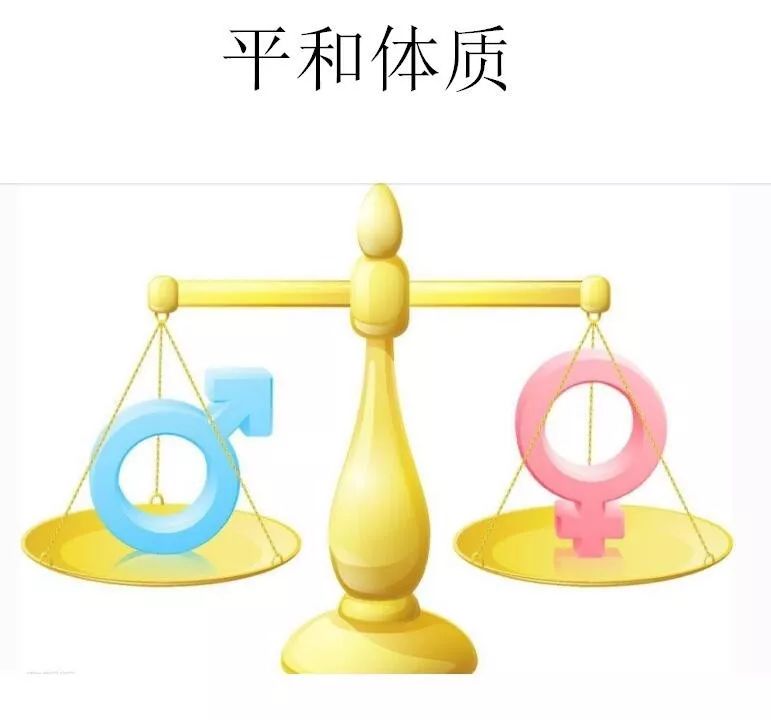
Individuals with a harmonious constitution maintain a state of balance. They are always energetic and generally do not tire easily. Externally, they appear neither overweight nor underweight; their height and weight are proportionate, and they are neither too fat nor too thin. Their personality is also relatively cheerful; they can take a joke and find it amusing without getting angry.
Most importantly, they rarely get sick. They typically do not visit the hospital for a year, experiencing only occasional minor colds that do not affect their studies, work, or life.
The World Health Organization has defined health as “not merely the absence of disease or infirmity but a state of complete physical, mental, and social well-being.” In simple terms, health is a state of balance. If the body is well but one is easily angered, irritable, or has difficulty getting along with others, that does not constitute health or a harmonious state.
Individuals in a harmonious state can cope with setbacks and various difficulties. They possess both physical and mental health, which defines the harmonious constitution. Those with a harmonious constitution have a good complexion, abundant energy, and excellent mental resilience. The most important aspect of a harmonious constitution is inner peace; when the mind is calm, all parts of the body can coordinate, leading to a healthy life.


Healthy individuals with a harmonious constitution exhibit the following nine characteristics.
1. Physical form: Individuals with a harmonious constitution have a balanced physique, with height and weight proportionate, neither overweight nor underweight, and consistently solid muscles.
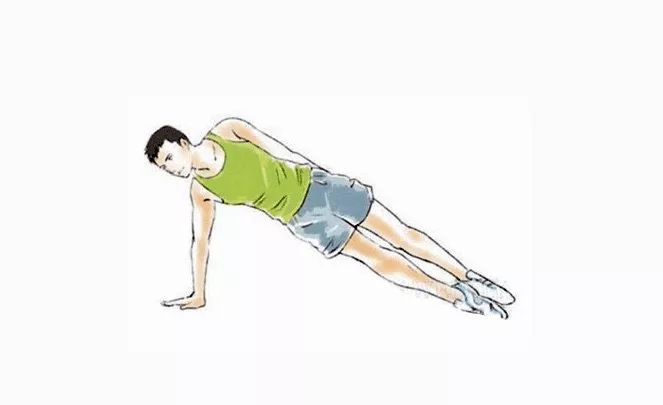

2. Behavioral dynamics: Individuals with a harmonious constitution walk at a moderate pace, are responsive, and maintain a steady rhythm.

3. Mental state: Individuals with a harmonious constitution
have bright eyes, active thinking, a lively demeanor, abundant energy, and a youthful spirit.


4. Skin color: Individuals with a harmonious constitution have even skin tone, a healthy glow, and a complexion that is subtly rosy.


5. Sleep quality: Individuals with a harmonious constitution fall asleep quickly, sleep deeply, do not wake up at night, have few dreams, and wake up feeling refreshed.

6. Dietary habits: Individuals with a harmonious constitution have regular meals, do not have picky eating habits, and have good digestion and absorption.

7. Emotional state: Individuals with a harmonious constitution have stable emotions, experience few fluctuations, and maintain a balanced temperament, being easy-going and optimistic.

8. Bowel movements: Individuals with a harmonious constitution have regular bowel movements once a day, which are smooth and banana-shaped, with a yellow-brown color. Urination is smooth, with a light yellow and clear color.
9. Female menstrual health:
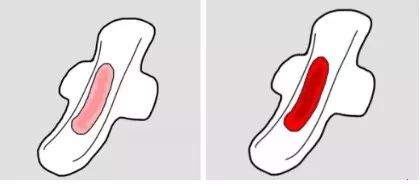


Healthy menstrual health includes:
1. Menstrual duration: Also known as the menstrual period, it refers to the duration of menstruation. The normal duration is 3-7 days, with most individuals experiencing 4-5 days.
2. Menstrual cycle: The first day of menstruation to the first day of the next menstruation constitutes one menstrual cycle. The calculation of the menstrual cycle includes the first day of menstruation. The normal menstrual cycle is 28-35 days, with regularity in timing. Variations of 7-10 days earlier or later are considered normal.
3. Menstrual quality: Refers to the characteristics of menstrual blood. Normally, menstrual blood is neither too thin nor too thick, does not clot easily, and has no unusual odor.
4. Menstrual volume: Refers to the amount of blood lost during menstruation. A normal menstrual loss is 50-80ml, with less than 20ml considered too little and more than 80ml considered too much. During the first two days of menstruation, the volume is generally higher, with a standard sanitary pad being saturated with approximately 15-20ml of blood, which can help estimate the total menstrual blood loss.
5. Menstrual color: Normal menstrual blood is dark red.
Based on the above nine characteristics, you can assess whether you have a healthy harmonious constitution. Healthy individuals certainly have good lifestyle habits, and if you are a healthy harmonious constitution, be sure to maintain it ❤️

